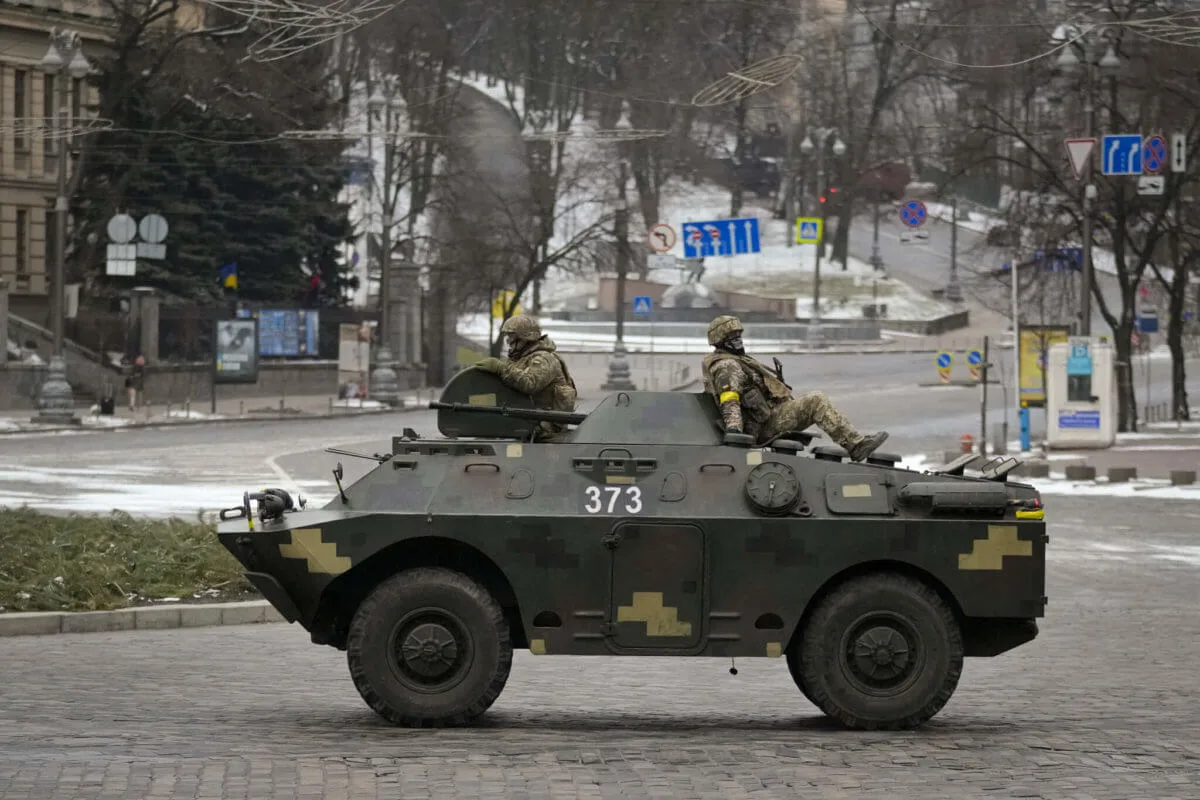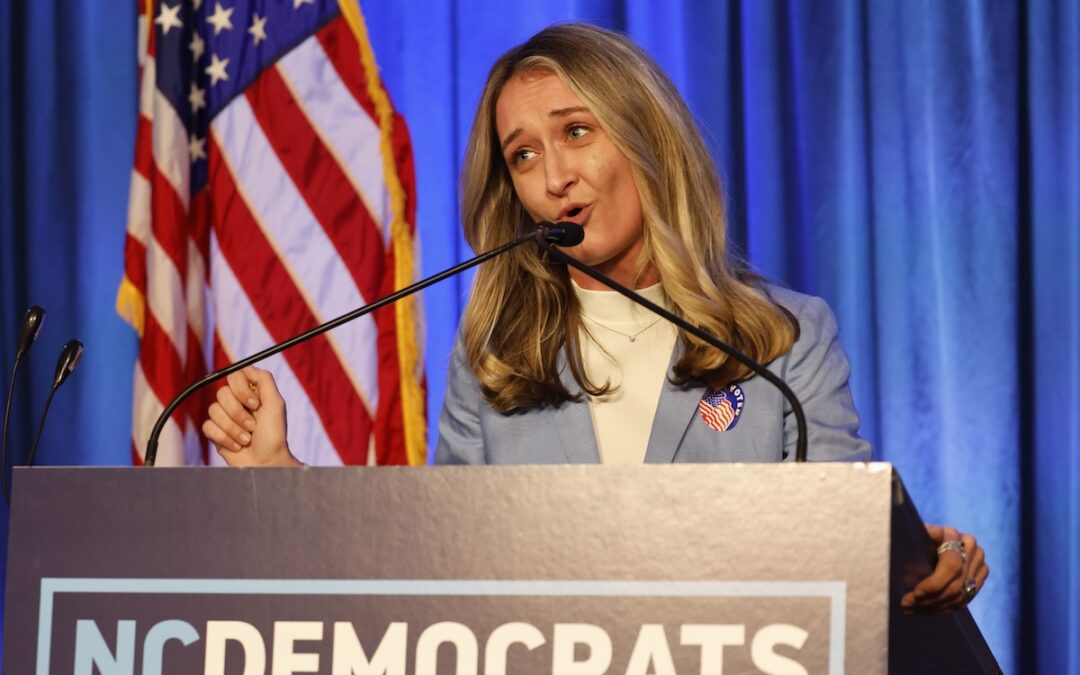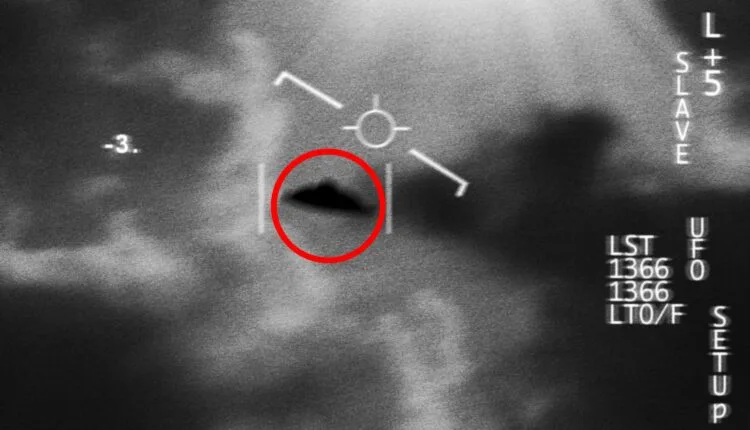
Ukrainian servicemen ride on top of an armored personnel carrier speeding down a deserted boulevard during an air raid alarm, in Kyiv, Ukraine, Tuesday, March 1, 2022. The U.N.'s refugees chief is warning that many more vulnerable people will begin fleeing their homes in Ukraine if Russia's military offensive continues and further urban areas are hit. (AP Photo/Vadim Ghirda)
Disinformation is highly effective during times of chaos, like with the Russian attack on Ukraine. But sussing out the real information takes only a few minutes.
A few days after Russia’s invasion of Ukraine seemed to rally the world against it, a Twitter video showed a jet fighter soaring over a city shooting enemy aircraft from the sky.
It was, the Twitter post said, the “Ghost of Kiev,” a Ukrainian pilot who had saved the city so far from at least six Russian jets.
But the video was fake, and it has been viewed more than 750,000 times.
The buildings in the video were real, but someone added the jet using gaming software then created a storyline that many people wanted to hear.
“Social media feeds are filled with distressing images, videos and stories with descriptions that convey they are scenes from the ongoing crisis,” the fact checking site PolitiFact wrote on Monday. “And while legitimate coverage of the operation has shown troubling scenes of destruction and turmoil, many of the images appearing on social media have turned out to be fake, outdated or unrelated to the fighting in Ukraine.”
The war in Ukraine might be 5,000 miles away from North Carolina, but its consequences will not stop over there. There are some 20,000 people of Ukrainian ancestry in North Carolina, the North Carolina Ukrainian Association says, most with family back home. And the US is likely to see higher gas prices and further inflation on some goods because of the fighting and consequent sanctions leveled against Russia. North Carolina is also likely to be a key destination for Ukrainian refugees. That’s not to mention the increased prospects of a nuclear standoff.
Here is a quick guide on how to make sure what you are seeing online about the fighting or its ramifications are real.
Do a Reverse Image Search
Disinformation is highly effective during times of chaos “because people are emotional (scared, confused, angry, excited, etc.) and want instant explanations,” the fact-checking master Snopes says.
“In short, people are eager to spread links that justify their feelings or existing beliefs about the chaos — oftentimes without taking a pause to make sure what they say, or show, is true.”
When you see a compelling image or video snippet, you can paste the link into a Google Image search here, and it will show you all the other times it appeared over the years. If the video in question says it was taken a day ago and you find the same background in a video from 2008, you have your answer – it’s old news.
Sites like TinEye, InVid and the ReV extension on Google Chrome offer more detailed image search functions, and can show you the content’s source and time stamp.
Consult Fact-Checking Sites
Snopes, PolitiFact and AFP Factcheck, among others, often post about the most widely shared pieces of disinformation. They are thoroughly vetted and offer detailed sourcing, context, links and evidence for their claims.
Watch for Warning Signs
Cindy L. Otis, a former CIA analyst, wrote an excellent guide in 2020 for spotting the lies hidden in your newsfeed.
Be skeptical, she writes, of images that:
- Lack specific attribution or locations.
- Are blurry, pixelated or distorted around the edges of an object. Such signs could mean the image was altered.
- Contain wavy lines or inconsistent lighting from one side of the image to the other.
“The people who make this kind of video content know how easy it is for us to get sucked into sites like YouTube,” Otis wrote. “Before moving on to your next video, stop and take the time to consider what you just watched and who created it.”
Politics

Op-Ed: North Carolina Republicans are working overtime to restrict abortion even more. But we can stop them at the ballot box.
When I think about abortion access in North Carolina, I think about lying there on a hospital bed after I was sexually assaulted, with sympathetic...

Mark Robinson and Michele Morrow pose a threat to women and kids, warns Anderson Clayton
The state’s Democratic Party chair believes North Carolinians deserve better than a six-week abortion ban and the defunding of public schools that...
Local News

The 5 most believable UFO sightings ever reported in North Carolina
Read about five alien encounters that may forever remain unexplained. When you think of the most common places where you might hear a UFO sighting...

Good News Friday: It’s a good day to be a fan of the NC State Wolfpack
The men's and women's teams will compete for a national championship in college basketball this weekend. Plus: How to watch the solar eclipse, and...





